Lawyers, a factory worker among the ordinary Ukrainians holding the line against Russia at Izyum
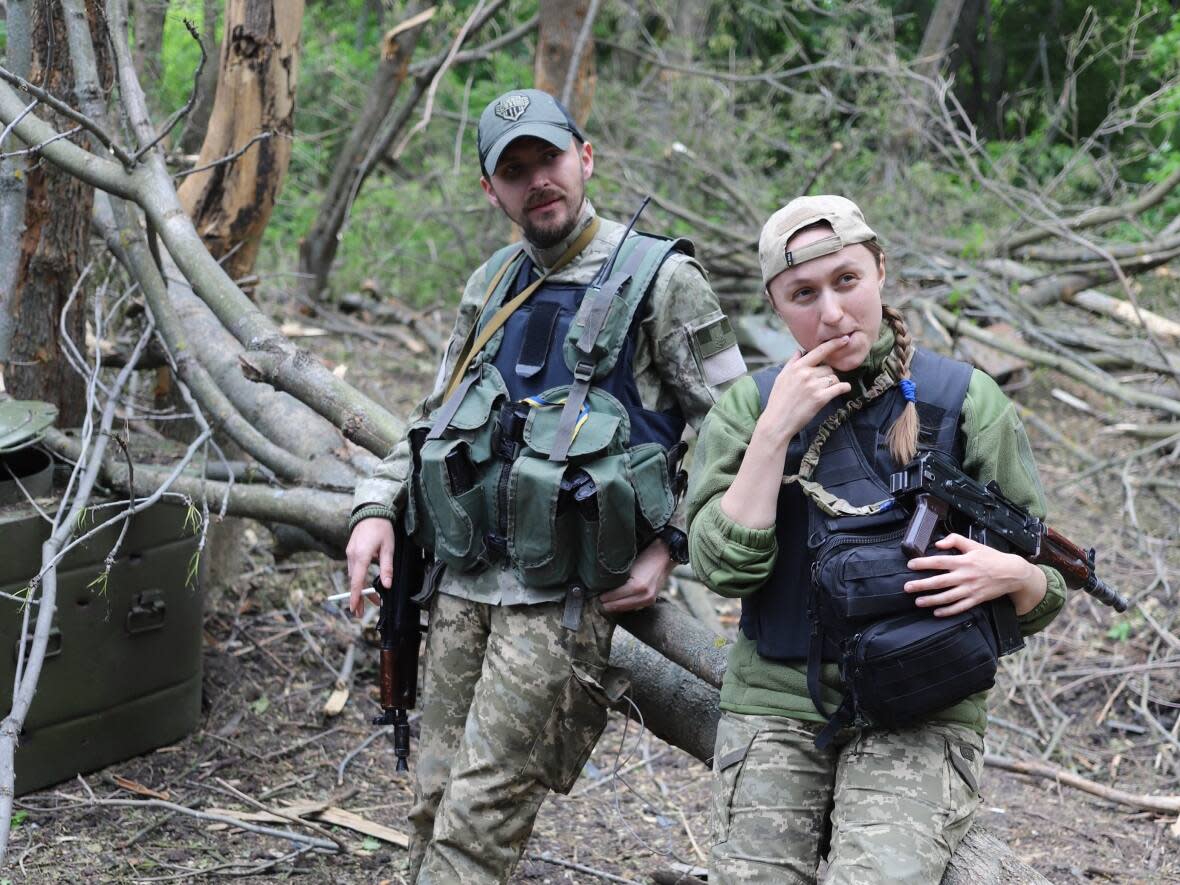
Green fields stretch out under an endless sky. The hillside slopes gently downward until it meets a grove of oak trees in full bloom; picturesque clouds and a subtle breeze complete the idyllic countryside setting.
Then, a series of booms, as incoming artillery strikes a hill a few kilometres away, a sudden reminder that this spring is unlike any Ukraine has seen in decades.
This particular hillside lies on the border between Ukraine's Kharkiv and Donetsk oblasts, or administrative regions, in the eastern Donbas region. About 20 kilometres to the north is the city of Izyum, seized by Russian forces in early April and now a spearhead of Moscow's offensive in this area.
Most of those on the Ukrainian front line are regular army troops, but paramilitary and volunteer battalions are also active. This particular area is held by one of them: a detachment from the Organization of Ukrainian Nationalists (OUN), a group whose origins date back to the interwar period and whose members were allied with Nazi Germany against the Soviets during the Second World War.
The OUN unit near Izyum is small, about 70 or so fighters. They split their time between two positions: a second defence line on the hill, with supplies and sleeping quarters, and the "zero position," a set of trenches several kilometres ahead that confronts direct assaults from Russian troops.
Russia launches offensive in Eastern Ukraine
<iframe title="Russia launches offensive in Eastern Ukraine" aria-label="Locator maps" id="datawrapper-chart-PsIWk" src="https://datawrapper.dwcdn.net/PsIWk/35/"
From the factory to the front line
Vova Myshensky, 30, was a worker in a bread factory when the war broke out. As soon as it did, he and his two brothers, Nazar and Evgeny, looked for a unit to join in order to contribute to their country's defence.
They soon found the OUN. The three of them fought in Borodyanka, a town northwest of Kyiv that saw some of the heaviest fighting in the war's first month. Once Russian troops pulled out from northern Ukraine, the brothers were redeployed to the Izyum front.
"Even though this is the second line, we come under fire here a lot," said Myshensky.

He pointed at two holes near his sleeping quarters.
"Those are Uragan rockets," he said of Russian rocket artillery responsible for the damage. "We are lucky that they didn't explode. The ground was too soft, and they just burrowed in."
Even closer was the source of an explosion that ripped a hole through an abandoned warehouse on the hillside nearby.
"That one was a [Russian] tank," Myshensky said. "There was an assault here last week, and [the Russians] got to within a kilometre or two."
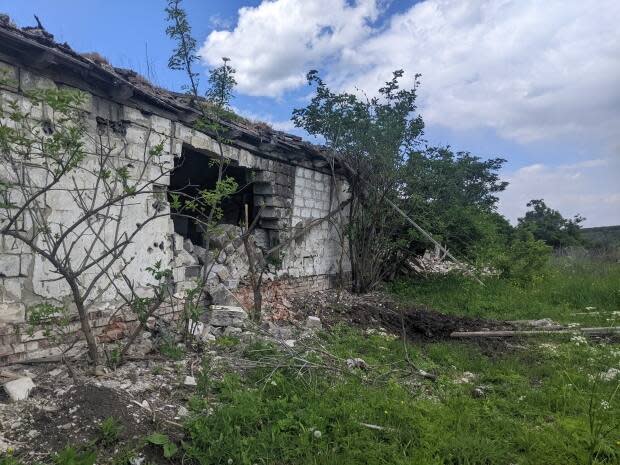
Trading legal briefs for rifles
The OUN volunteers here are an eclectic mix. Some of them have chosen call signs based on their pre-war careers, such as Shakhtar, which is Ukrainian for "miner."
Others have stuck to their own names.
Oksana Krasnova, a 26-year-old lawyer from the western city of Ternopil, and her husband left behind their careers at a Kyiv law firm to pick up weapons.
"I'm working as a sniper mostly these days," she said, brandishing a rifle with a long scope. "We've been on this front a little over a month now, rotating between here and the zero position."
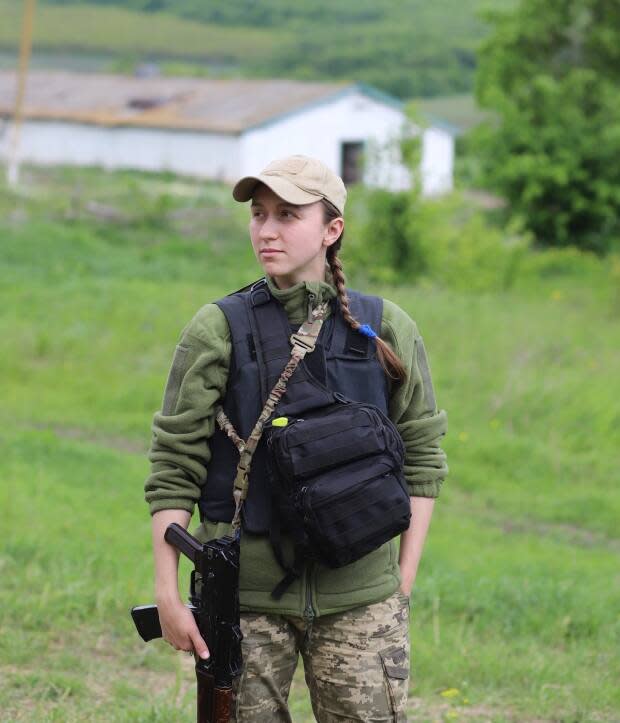
Her husband, 35-year-old Stas, has just returned from a three-day rotation on the front line.
"It is non-stop action there," he said. "Shooting, bombing happens 24 hours a day. You get so exhausted you even manage to sleep through it a few hours at night."
He shows a few videos of the combat on his phone. In one of them, just two minutes long, the whistle of nearly 10 mortar rounds can be heard close to his position. The crack of small arms fire flying just over his head is audible as he ducks in the trench.
"At least three times a week, they launch assaults," Stas said of Moscow's relentless attempt to advance. "They use everything: tanks, infantry, even white phosphorus. This time, Russian soldiers tried to storm our positions three times."
Ukrainian officials alleged earlier in the invasion that the Russians were using white phosphorous, an incendiary chemical that has some legitimate military uses as a source of light or cover on the battlefield but can cause severe burns. CBC has not independently verified the claim or those of the OUN fighters.

After what he said were a hellish 72 hours on the front line, Stas was savouring a break in the relative safety of the second line.
"Now that I'm back here, I sleep like a baby," Stas said.
"Like a bear," Oksana said, laughing and planting a kiss on his cheek.
Their sleeping quarters are spartan: a small, brick building with rows of wooden planks propped up on bricks. Generators power cooking devices and a few lamps. Some older soldiers sit around a boiling kettle, preparing tea.
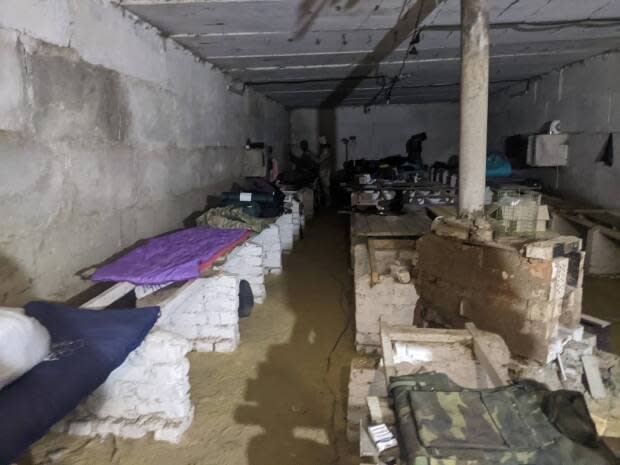
A controversial history
The OUN was the largest organization of Ukrainian nationalists during the Second World War. In the Soviet era, it fractured into various factions in exile before emerging again in an independent Ukraine.
During the Second World War, the group fought for Ukrainian independence under its controversial yet revered leader, Stepan Bandera, allying itself with whoever served its nationalist aims.
"People from the OUN and its affiliated military unit, the Ukrainian Provisional Army, were certainly involved in the massacres of Jews and Poles during World War II," said Michael Colborne, a researcher and author of a book on far-right groups in Ukraine. "[That includes] pogroms that killed tens of thousands of Jews in 1941 to massacres of Poles in Volhynia and eastern Galicia in 1943-44."
It's unlikely, however, that the modern OUN has much connection with its wartime predecessor, he said.
"I'd say the current military unit using its name isn't in any way directly connected and is more using the name to establish a connection with Ukrainian nationalists of the past," Colborne said. "Moreover, while it's clear there are and have been nationalist and even far right elements within that unit, calling them 'Nazi' or anything like that is a stretch."
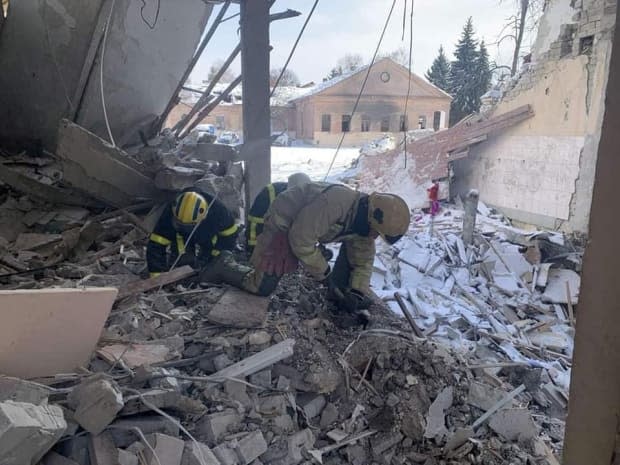
The OUN volunteers with whom CBC spoke in Izyum seemed to have little interest in the specifics of the group's past. Most joined because it was an easier way to get involved in Ukraine's defence than joining the army.
Like many Ukrainian nationalist groups, OUN uses a black and red flag, several of which were hanging around the Izyum outpost.
The colour contrast with the Ukrainian flag, which is bright blue and yellow, is intentional and symbolic, says Oksana.
"[The national flag] is good for peacetime," she said. "Our flag, with the colours of blood and death, is for war."

She and Stas have gone through much together: both participated in the 2014 Maidan Revolution, the uprising that toppled Ukraine's pro-Russian government. They each sustained injuries, Oksana from rubber bullets and Stas from a stun grenade.
Stas, who hails from Crimea, which was annexed by Russia in wake of the uprising, has even greater reason to fight Moscow's attempt to seize more of Ukraine.
"I lost my hometown that year," he said of his native Simferopol. "Now, they want the rest."
Outside the bunker, there is an artillery duel shaping up.
A salvo of howitzer rounds fires off from a few kilometres away: the OUN's equipment. Shortly thereafter, the answer comes from the other side, the incoming Russian fire felt in a change in air pressure even as far away as the fighters' bunker.
WATCH | The fallout of pushing Russia from Kharkiv:
Each side is hunting the other.
"As soon as [our artillery] fires, the guys pack up the guns and move, before [the Russians] can hit back," Oksana said.
"But the Russian drones are searching for us. Last week, we watched one following our guys, one of our Gvozdikas [a self-propelled howitzer]. A few minutes later, Russian shells almost hit it. They barely survived."
'War is a job'
This game of cat and mouse has come to define combat here at the second line. Oksana, for her part, is eager to go on the offensive.
"Oh, I hope," she said when asked about the possibility of attacking the Russian lines. "But for now, our job is just to hold them back."
Recent reports have suggested that Moscow has massed additional forces at Izyum for a renewed push. If Russian troops advance here, they will be able to push south, threatening to cut off the cities of Sloviansk and Kramatorsk — and the Donbas region as a whole — from the rest of Ukraine.
Oksana seems ready. She said morale among her fellow fighters is "perfect."
"War is a job," she said. "And you must do your job well."
For Myshensky, the former bread factory worker, it's a question of fighting now so the next generation won't have to.
"If it wasn't me fighting today, it would be him tomorrow," he said, showing a picture of his three-year-old son.
WATCH | Russians push on in the east:


